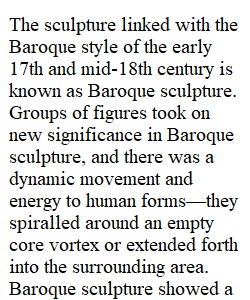


Q Choose one of the literary movements that you read about this week and at least one work from that movement. Movements, authors, and famous works are discussed in the lesson as well. You do not have to choose authors or works discussed in the lesson, but you may. For your initial post, address one of the following: Option 1: Examine the movement and specific work in relation to historical and political influences of the movement. Include a one paragraph summary of the plot before moving on to the examination of the work in relation to the movement. Option 2: Examine a specific artwork influenced by a literary work and how the artist captured the subject or story. Here are a few examples, but you are not restricted to this list: Asher B. Durand's Thanatopsis (influenced by William Cullen Bryant's "Thanatopsis") John William Waterhouse's The Lady of Shalott (influenced by Alfred, Lord Tennyson's "The Lady of Shalott") Sir John Everett Millais's Ophelia (influenced by Shakespeare's Ophelia from Hamlet) Gian Lorenzo Bernini's Apollo and Daphne or The Rape of Prosperina (influenced by ancient myths) Ancient Greek vase painting (influenced by various ancient myths)
View Related Questions